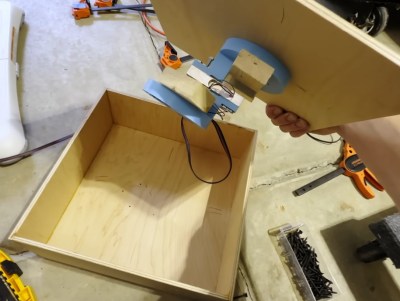The Franck–Hertz experiment was a pioneering physics observation announced in 1914 which explained that energy came in “packets” which we call “quanta”, marking the beginning of quantum physics. Recently, [Markus Bindhammer] wrote in to let us know he had redone the experiment for himself.
In the original experiment a mercury vacuum tube was used, but in his recreation of the experiment [Markus] uses a cheaper argon tube. He still gets the result he is looking for though, which is quite remarkable. If you watch the video you will see the current readings clump around specific voltage levels. These voltage levels indicate that energy is quantized, which was a revolutionary idea at the time. If you’re interested in how contemporary physics regards, particles, waves, and quanta, check out this excellent presentation: But What Actually Is a Particle? How Quantum Fields Shape Reality.
 Before closing we have to say that the quality of [Markus]’s build was exceptional. He made a permanent enclosure for his power supplies, made custom PCBs, used ferrule crimps for all his wire interconnects, included multiple power switches and dials, professionally labeled and insulated everything, and even went to the trouble of painting the box! Truly a first class build. One thing that surprised us though was his use of rivets where we would almost certainly have used bolts or screws… talk about confidence in your workmanship!
Before closing we have to say that the quality of [Markus]’s build was exceptional. He made a permanent enclosure for his power supplies, made custom PCBs, used ferrule crimps for all his wire interconnects, included multiple power switches and dials, professionally labeled and insulated everything, and even went to the trouble of painting the box! Truly a first class build. One thing that surprised us though was his use of rivets where we would almost certainly have used bolts or screws… talk about confidence in your workmanship!
If you’re interested in quantum physics it is certainly a topic we have covered here at Hackaday. Check out Quantum Mechanics And Negative Time With Photon-Atom Interactions or Shedding Light On Quantum Measurement With Calcite.
Continue reading “A DIY Version Of The Franck-Hertz Experiment” →



















